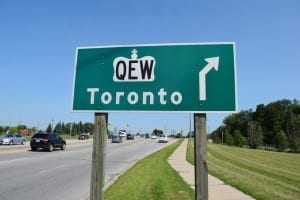Christian Gerlach’s 2010 study of mass violence focuses on extremely violent societies
This post (originally posted on July 8, 2015) is concerned with Extremely Violent Societies: Mass Violence in the Twentieth Century (2010) by Christian Gerlach.
Gerlach, who argues that the concept of “extremely violent societies” is a useful alternative to the concept of “genocide,” has developed a conceptual framework, with a focus on “meticulous empirical research” (p. 259) related to mass violence, that make good sense to me. His views warrant consideration.
That said, I have the sense that the term “genocide” is firmly established and is not about to be dropped from usage. That being the case, it’s important to ensure that, when the term is used, we take care to ensure there is precision and agreement with regard to what it is that we are talking about.
Dark side of modernity
Gerlach refers, in Extremely Violent Societies, to an article by Alexander Laban Hinton entitled “The dark side of modernity: Toward an anthropology of genocide (2002)”. To access the article at Google Books, click here.
Alexander Hinton speaks of a two-faced modernity, where one face represents civilization and progress, and the other represents genocide.
He notes that with the rise of the nation-state, millions of Indigenous people died from disease, starvation, slave labour, and murder. He adds that sixty million non-Indigenous people were also killed in the twentieth century including:
- Jews
- Cambodians
- Bosnians
- Rwandan Tutsis
- Hereros
- Armenians
- Ukrainian peasants
- Gypsies
- Bengalis
- Burundi Hutus
- the Aché of Paraguay
- Guatemalan Mayans, and
- the Ogoni of Nigeria
The author notes that such devastation poses challenges to scholars:
Why does one group of human beings try to eradicate another group?
How do we as human beings respond to such events, and how might we prevent them in the future?
Hinton argues that anthropologists are uniquely positioned to address such questions but in general they have – until the 1980s – stayed away from the analysis of political violence in complex state societies.
Ethnization of history
I came across the article by Alexander Hinton because Christian Gerlach cites it in Chapter 7 of his 2010 study.
In the chapter entitled “The ethnization of history: The historiography of mass violence and national identity construction,” Gerlach refers to “the similarities between nationalist narratives and the picture drawn in comparative genocide studies” (p. 259).
Gerlach notes that the latter academic field “was established by social scientists who were model-oriented rather than prone to meticulous empirical research.”
“In their mostly broadly designed studies,” Gerlach adds, “they could hardly question the factual framework provided by more specialized scholarly works, which in turn rested on nationalist narratives. For example, Donald Beachler’s recent study of why the case of Bangladesh has been neglected by Europeans and North Americans has its merits, yet it amounts to an appeal to accept in full the Bangladeshi nationalist narrative” (p. 259).
Gerlach notes that such a lack of empirical verification “may be not accidental, as there are intrinsic congruences between national narratives and basic assumptions of genocide studies. A major criticism of genocide studies is the primordial interpretation of ethnicity which prevails within it, instead of an understanding of race, ethnicity, and nation as a dynamic process of definition as to what characterizes it and who is a member” (p. 260).”
A bibliographical note regarding the last sentence, in the above-quoted text, refers to the article, noted earlier, by Alexander Laban Hinton (“The dark side of modernity (2002)”).
Imagined communities
“That is even stranger,” according to Gerlach, “given that much of recent scholarship on nationalism has emphasized that nations are not natural units, but usually invented or ‘imagined’ under the leadership of certain middle-class elites.”
The following excerpt (I have omitted the enumerated notes and added paragraph breaks) highlights Gerlach’s argument:

View of Queen Elizabeth Way (QEW) looking west toward Dixie Road in Mississauga. On the right is a highway sign bearing the British crown symbol. Jaan Pill photo
This ethnization in a wider sense is specific to European and North American thinking. “Race, ethnicity, nation and religion are favored categories in modern discourse,” writes Alex Hinton, who notes the “reification of concepts such as race and ethnicity” is not surprising, given the historical privileging of perceived biological difference in much Western discourse.
Quite ironically, the objects of this view are often located outside the “West” – Vinay Lal argues that particularly conflicts outside the so-called West are “all too easily” seen as primordial. In a way this “Western” urge also applies to the “desire to demonstrate a racial dimension to Soviet communist policies,” which has been ascribed to an overdose of the “Holocaust paradigm.”
In contrast, certain types of imperialist violence have been marginalized in genocide studies, which again suggests a close relationship between that field and nationalism: the Vietnam war seems to have been defined away from the realm of “genocide” in a field dominated by North American scholars.
One can only maintain that as a result of the 1846-48 Mexican-American War, “Mexico was truncated without genocide occurring,” if one ignores the mass destruction of indigenous peoples inside the territories annexed by the USA from Mexico in the following years and decades.

When I first began to read about the history of the British empire, I had the sense that the benign features of the empire predominated. Later I arrived at a more nuanced view. Jaan Pill photo
Such marginalization – though not everybody in the industrialized North subscribed to it – was apparently undertaken quite consciously, as Helen Fein’s remark would suggest: “If both the US and France […] are in the same class (of perpetrators) as Nazi Germany and the USSR, we have a construct good for nothing.”
Greece
The 2010 study notes that, as the outcome of particular historical circumstances, Greece has frequently demonstrated the characteristics of an extremely violent society during the twentieth century
Internal versus imperialist violence
In the “Conclusions” chapter, Gerlach distinguishes between internal and imperialist mass violence. Among other things, he notes that “in imperialist violence, two societies – not merely two states – are in confrontation, with the bulk of the violence of course exerted by the occupiers against the occupied. This created plenty of opportunities to invent otherness, with groups treated differently according to their value in the use of the acquired territory. Unfortunately, the reasons for the mass support of imperialism and imperialist violence at home in the empire-building country – which clearly go beyond immediate personal gain, however important that may have been – are generally scarcely researched” (P. 279).
Nazi Germany
Gerlach notes, with regard to the distinction between internal and imperialist violence, that:
Nazi Germany has been cited as exceptional, but sometimes for the wrong reasons. Other highly industrialized countries, too, have committed mass violence in an imperialist context, even in the twentieth century (Japan in East and Southeast Asia, the USA in the Philippines and Vietnam, France in Algeria, or Britain in Kenya).
What makes the German case extraordinary, except for the sheer amount of violence and brutality, is the fact that an industrial nation turned to mass murder against groups within it, as well as to its particularly radical internal racism.
This has led to a certain, though implicit, fascination with the fate of German victims, which resulted in the relative neglect of the imperialist aspect of German violence that caused 96 percent of all deaths.
An indicator of this misperception are enumerations of non-Jewish victims of Nazism that include the disabled, “gypsies,” homosexuals, political enemies, Jehovah’s Witnesses, or “asocials” and “professional criminals” (that is, mostly Germans), but less frequently much larger victim groups like Soviet prisoners of war, peasants affected by anti-partisan warfare, or forced labor.
No such thing as global democracy
The book’s concluding chapter notes (p. 289):
A core question is then how can profound social change be brought about without massive violence or forced migration? It is hard to see how this could happen in a capitalist world of inequality, imbalances, and exploitation. While less unequal, socialist accumulation has also shown a high incidence of mass violence and misery.
Sadly, the modernization aficionado’s argument that mass violence is historically a transitional problem that will go away after industrialization – if only at the price of considerable suffering – has little validity. Many countries suffer from a blocked industrialization accompanied by the decay of old social structures, a sort of capitalism without industrialization, for instance in sub-Saharan Africa.

In some circumstances, the British crown symbol is seen in outline form, as on this highway sign on Cawthra Road looking north toward the QEW. Jaan Pill photo
For the capitalist world system is based on inequality within nations but also internationally, with industrial powers (and societies) using non-industrial regions for their selective business interests. Some of the massive violence brought about in this process has been described in previous chapters.
Part of it in the twentieth century was also directly inflicted by industrial nations, whether bourgeois democracies or not – during the expansion of new empires such as Germany, Japan, and the USA, and wars of emancipation from Algeria to Kenya. As has been argued, even “national democracy can be compatible with war and genocide,” while only “global democracy creates different standards.” Unfortunately, there is no such thing as global democracy.
Updates:
A Nov. 29, 2013 Independent article is entitled: “Revealed: How British Empire’s dirty secrets went up in smoke in the colonies: Thousands of confidential papers were destroyed as British rule neared its end in many colonies.”
A July 8, 2015 New York Times article is entitled: ” ‘The Unraveling,’ by Emma Sky.”
A July 10, 2015 New York Times article is entitled: “Empathy Is Actually a Choice.”
A July 24, 2015 Guardian article by Pankaj Mishra is entitled: “How to think about Islamic State: Islamic State is often called ‘medieval’ but is in fact very modern – a horrific expression of a widespread frustration with a globalised western model that promises freedom and prosperity to all, but fails to deliver.”
“In an irony of modern history, which stalks revolutions and revolts to this day,” Pankaj Mishra notes, “the search for a new moral community has constantly assumed unpredicted and vicious forms. But then the dislocations and traumas caused by industralisation and urbanisation accelerated the growth of ideologies of race and blood in even enlightened western Europe.”
A Sept. 27, 2015 CBC article is entitled: “Lasting effects of trauma reaches across generations through DNA.”
A Feb. 7, 2016 Guardian article is entitled: “‘My family resisted the Nazis’: why director had to film Alone in Berlin.”
A March 6, 2016 CBC article is entitled: “René Girard’s theories still explain the violence all around us: French-born scholar spent his career trying to understand what what makes violence a chronic problem.”
An Aug. 18, 2016 Guardian article is entitled: “Uncovering the brutal truth about the British empire: The Harvard historian Caroline Elkins stirred controversy with her work on the crushing of the Mau Mau uprising. But it laid the ground for a legal case that has transformed our view of Britain’s past.”
A Best of 2016 Longreads article is entitled: “Theorizing the Drone: What does the rise of the drone mean for justice, for the ethics of heroism, for psychology? Most important of all, who is dying and why?”
An American Genocide (2016)
Also of relevance, with regard to organized violence, is a study entitled: An American Genocide: The United States and the California Indian Catastrophe, 1846-1873 (2016). A blurb (I have added paragraph breaks, and capitalized the word “Indigenous”) reads:
Between 1846 and 1873, California’s Indian population plunged from perhaps 150,000 to 30,000. Benjamin Madley is the first historian to uncover the full extent of the slaughter, the involvement of state and federal officials, the taxpayer dollars that supported the violence, Indigenous resistance, who did the killing, and why the killings ended.
This deeply researched book is a comprehensive and chilling history of an American genocide. Madley describes pre-contact California and precursors to the genocide before explaining how the Gold Rush stirred vigilante violence against California Indians. He narrates the rise of a state-sanctioned killing machine and the broad societal, judicial, and political support for genocide. Many participated: vigilantes, volunteer state militiamen, U.S. Army soldiers, U.S. congressmen, California governors, and others.
Ultimately, the state and federal governments spent at least $1,700,000 on campaigns against California Indians. Besides evaluating government officials’ culpability, Madley considers why the slaughter constituted genocide and how other possible genocides within and beyond the Americas might be investigated using the methods presented in this groundbreaking book.
The Extermination of the European Jews (2016)
A more recent study by Christian Gerlach is entitled: The Extermination of the European Jews (2016). A blurb (I have added paragraph breaks) reads:
This major reinterpretation of the Holocaust surveys the destruction of the European Jews within the broader context of Nazi violence against other victim groups.
Christian Gerlach offers a unique social history of mass violence which reveals why particular groups were persecuted and what it was that connected the fate of these groups and the policies against them. He explores the diverse ideological, political and economic motivations which lay behind the murder of the Jews and charts the changing dynamics of persecution during the course of the war.
The book brings together both German actions and those of non-German states and societies, shedding new light on the different groups and vested interests involved and their role in the persecution of non-Jews as well. Ranging across continental Europe, it reveals that popular notions of race were often more important in shaping persecution than scientific racism or Nazi dogma.
Genocide: A World History (2017)
I have come across many references to the work of Norman A. Naimark. A blurb (I have added paragraph breaks and capitalized “Indigenous”) for one of his studies, Genocide: A World History (2017), reads:
Genocide occurs in every time period and on every continent. Using the 1948 U.N. definition of genocide as its departure point, this book examines the main episodes in the history of genocide from the beginning of human history to the present.
Norman M. Naimark lucidly shows that genocide both changes over time, depending on the character of major historical periods, and remains the same in many of its murderous dynamics. He examines cases of genocide as distinct episodes of mass violence, but also in historical connection with earlier episodes.
Unlike much of the literature in genocide studies, Naimark argues that genocide can also involve the elimination of targeted social and political groups, providing an insightful analysis of communist and anti-communist genocide.
He pays special attention to settler (sometimes colonial) genocide as a subject of major concern, illuminating how deeply the elimination of Indigenous peoples, especially in Africa, South America, and North America, influenced recent historical developments. At the same time, the “classic” cases of genocide in the twentieth Century – the Armenian Genocide, the Holocaust, Rwanda, and Bosnia — are discussed, together with recent episodes in Darfur and Congo.

Also of relevance is a book I learned about from a New York Times article, namely Hitler’s American Model: The United States and the Making of Nazi Race Law (2017).
Summary
How American race law provided a blueprint for Nazi Germany
Nazism triumphed in Germany during the high era of Jim Crow laws in the United States. Did the American regime of racial oppression in any way inspire the Nazis? The unsettling answer is yes. In Hitler’s American Model, James Whitman presents a detailed investigation of the American impact on the notorious Nuremberg Laws, the centerpiece anti-Jewish legislation of the Nazi regime. Contrary to those who have insisted that there was no meaningful connection between American and German racial repression, Whitman demonstrates that the Nazis took a real, sustained, significant, and revealing interest in American race policies.
As Whitman shows, the Nuremberg Laws were crafted in an atmosphere of considerable attention to the precedents American race laws had to offer. German praise for American practices, already found in Hitler’s Mein Kampf, was continuous throughout the early 1930s, and the most radical Nazi lawyers were eager advocates of the use of American models. But while Jim Crow segregation was one aspect of American law that appealed to Nazi radicals, it was not the most consequential one. Rather, both American citizenship and antimiscegenation laws proved directly relevant to the two principal Nuremberg Laws–the Citizenship Law and the Blood Law. Whitman looks at the ultimate, ugly irony that when Nazis rejected American practices, it was sometimes not because they found them too enlightened, but too harsh.
Indelibly linking American race laws to the shaping of Nazi policies in Germany, Hitler’s American Model upends understandings of America’s influence on racist practices in the wider world.